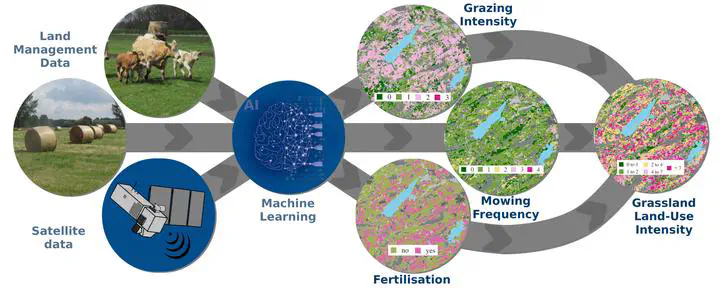Mapping Land-Use Intensity of Grasslands in Germany with Machine Learning and Sentinel-2 Time Series

Abstract
Information on grassland land-use intensity (LUI) is crucial for understanding trends and dynamics in biodiversity, ecosystem functioning, earth system science and environmental monitoring. LUI is a major driver for numerous environmental processes and indicators, such as primary production, nitrogen deposition and resilience to climate extremes. However, large extent, high resolution data on grassland LUI is rare. New satellite generations, such as Copernicus Sentinel-2, enable a spatially comprehensive detection of the mainly subtle changes induced by land-use intensification by their fine spatial and temporal resolution. We developed a methodology quantifying key parameters of grassland LUI such as grazing intensity, mowing frequency and fertiliser application across Germany using Convolutional Neural Networks (CNN) on Sentinel-2 satellite data with 20 m × 20 m spatial resolution. Subsequently, these land-use components were used to calculate a continuous LUI index. Predictions of LUI and its components were validated using comprehensive in situ grassland management data. A feature contribution analysis using Shapley values substantiates the applicability of the methodology by revealing a high relevance of springtime satellite observations and spectral bands related to vegetation health and structure. We achieved an overall classification accuracy of up to 66% for grazing intensity, 68% for mowing, 85% for fertilisation and an r2 of 0.82 for subsequently depicting LUI. We evaluated the methodology’s robustness with a spatial 3-fold cross-validation by training and predicting on geographically distinctly separated regions. Spatial transferability was assessed by delineating the models’ area of applicability. The presented methodology enables a high resolution, large extent mapping of land-use intensity of grasslands.